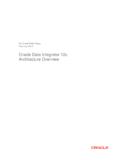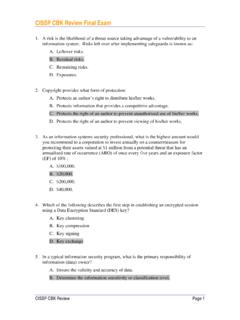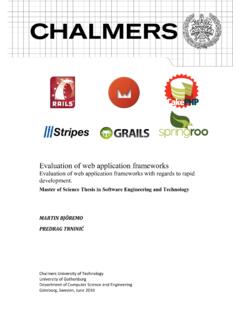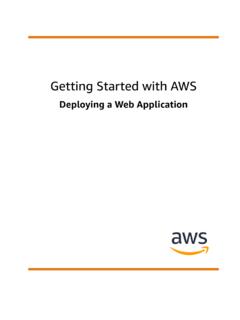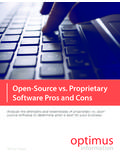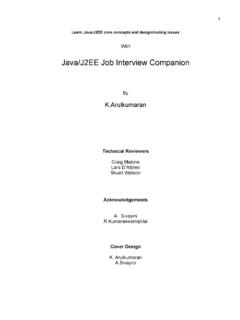Transcription of Web Application Firewall Evaluation Criteria - WASC
1 Web Application Firewall EvaluationCriteriaVersion (January 16, 2006)Copyright 2005,2006 Web Application security Consortium ( )Table of ContentsIntroduction ..2 Contributors ..2 Contact ..3 Categories ..4 Section 1 - Deployment Architecture ..4 Section 2 - HTTP and HTML Support ..7 Section 3 - Detection Techniques .. 10 Section 4 - Protection Techniques .. 12 Section 5 - Logging .. 13 Section 6 - Reporting .. 15 Section 7 - Management .. 16 Section 8 - Performance .. 20 Section 9 - XML .. 21A. Licence .. 211 IntroductionWeb Application Firewalls (WAF) represent a new breed of information security technology that is de-signed to protect web sites (web applications ) from attack. WAF solutions are capable of preventing at-tacks that network firewalls and intrusion detection systems can't.
2 They also do not require modificationof the Application source code. As today's web Application attacks expand and their relative level of soph-istication increases, it is vitally important to develop a standardised Criteria for product Evaluation . Howelse can we accurately compare or measure the performance of a particular solution?The goal of this project is to develop a set of web Application Firewall Evaluation Criteria ; a testing meth-odology that can be used by any reasonably skilled technician to independently assess the quality of aWAF solution. However, our aim is not to document the features thatmustbe supported in order for aproduct to be called a web Application Firewall . Web Application firewalls are simply too complex to betreated like conclude: the purpose of this document to draw one's attention to the features that are ofpotential im-portanceto a given project.
3 This comprehensive list should be used as basis to form a much shorter list offeatures that arerequired for the project. The shorter list should then be used to evaluate multiple web ap-plication Firewall categories are as expect to cover the following categories in the subsequent releases: Compliance, certifications, and interoperability. Increase coverage of performance issues (especially on the network level). Increase coverage of the XML-related document is a result of team effort. The following people have contributed their time and expertiseto the project: Robert Auger (SPI Dynamics) Ryan C. Barnett (EDS)Web Application Firewall Evaluation Criteria2 Charlie Cano (F5) Anton Chuvakin (netForensics) Matthieu Estrade (Bee Ware) Sagar Golla (Secureprise) Jeremiah Grossman (WhiteHat security ) Achim Hoffmann (Individual) Amit Klein (Individual) Mark Kraynak (Imperva) Vidyaranya Maddi (Cisco Systems) Ofer Maor (Hacktics) Cyrill Osterwalder (Seclutions AG) Sylvain Maret (e-Xpert Solutions) Gunnar Peterson (Arctec Group) Pradeep Pillai (Cisco Systems) Kurt R.
4 Roemer (NetContinuum) Kenneth Salchow (F5) Rafael San Miguel (daVinci Consulting) Greg Smith (Citrix Systems) David Movshovitz (F5) Ivan Ristic (Thinking Stone) [Project Leader] Ory Segal (Watchfire) Ofer Shezaf (Breach security ) Andrew Stern (F5) Bob Walder (NSS Group)ContactParticipation in the Web Application Firewall Evaluation Criteria project is open to all. If you wish tocomment on the Evaluation Criteria or join the team mailing list please contact Ivan Ristic via Application Firewall Evaluation Criteria3 CategoriesSection 1 - Deployment ArchitectureThis section highlights the questions key to determining the feasibility of web Application Firewall deploy-ment in a given Modes of OperationCan the device be operated in both passive and active (inline) mode?
5 Describe which of the followingactive modesof operation apply to the Can be installed as a transparent bridge. Can it be configured to fail open? Network must be reconfigured to direct traffic through the Proxy. Traffic is re-directed to flow through the WAF by making changes to DNS con-figuration or by traffic redirection on the network WAF is installed as a web server plug-in. Which web servers are supported? Ex-plain the level of integration with the web server. Some embedded web Application firewallsmay only tap into the communication channel and do everything themselves. Others may relyon the web server to do as much of the work as possible. (Both approaches have their advant-ages and disadvantages.) SSLSSL is often used to protect traffic coming from and going to web applications .
6 While this type of protec-tion achieves the goal of data protection, it hides the data from the protection systems ( intrusion de-tection systems, web Application firewalls) at the same time. Since SSL is in widespread use - in fact, se-cure deployments require it - if a WAF cannot get to the traffic then it will be unable to perform its how the WAF can be deployed to access the protected SSL. The network needs to be re-configured to move the SSL operations to theWAF itself. WAF decrypts the encrypted traffic to get access to the HTTP data. The commu-nication between the WAF and the web server can be in plain-text, or decrypts SSL. Configured with a copy of the web server's SSL private key WAF de-crypts the SSL traffic. The original data stream travels unaffected to the web servers, where itis separately decrypted and Applicable.
7 Working embedded in a web server, a WAF can be positioned to work justafter the SSL data is decrypted into certificates client certificates supported in passive mode? client certificates supported in active mode?Web Application Firewall Evaluation termination mode, can the content from client certificates be sent to the Application usingsome alternative transport method ( request headers).Other SSL termination mode, can the backend traffic ( the traffic from the WAF to the web server)be encrypted via SSL? the WAF support client certificates for backend communication? all major cipher suites supported by the SSL implementation. Which ones? the WAF retrieve SSL keys from an external key storage facility ( network-basedHardware security Module)?
8 The SSL implementation FIPS 140-2 certified? Which FIPS levels are supported (level IIand/or III)? there support for hardware-based SSL acceleration? If there is, are the SSL certificates se-curely stored in the hardware? Traffic BlockingIf the WAF is capable of blocking offending traffic, describe the nature of the blocking Intermediation. Traffic is intercepted and network protocol connections are termin-ated on the WAF. Attacks are blocked by not forwarding the blocked requests to the Interruption. Traffic is inspected, but not terminated by the WAF. Attacks areblocked by stopping the connection to the destination. This can be either before any packets ar-rive at the destination ( a single-packet attack), or after a partial connection has been buf-fered, but not completed, on the destination ( in the case of segmented packets).
9 Reset. Traffic is inspected by the WAF either via active, passive or embedded in-spection mechanism. Attacks are blocked by resetting the relevant network (TCP) reset is often used in conjunction with other blocking via third-party device. Traffic is inspected by the WAF. Attacks are blocked by noti-fying other devices ( router or network Firewall ) to block a the scope of blocking the HTTP the the IP the Application the Application blocking is taking place on the HTTP level, can the WAF be configured to present the user with afriendly, meaningful, message? Can a unique transaction ID be presented to the user (see Section )?For a WAF that supports blocking, is it possible to turn blocking off (completely, or for certain types ofrequests only - determined dynamically for every request)?
10 Web Application Firewall Evaluation Method of DeliveryDescribe how WAF is Software bundled with hardware. Appliances are usually highly optimised and maycontain specialised hardware components to increase performance. Are there other optionalhardware components that may further increase performance (except for SSL, which wasalready covered in )? is delivered as software Application that can be installed on a generic com-puter. Describe the reference hardware configuration. Is the Application delivered integratedwith an operating system? Or does it require an operating system to be installed on? Which op-erating systems are supported (including versions)? Are there other optional hardware compon-ents that can increase performance further (such as SSL encryption cards)?

